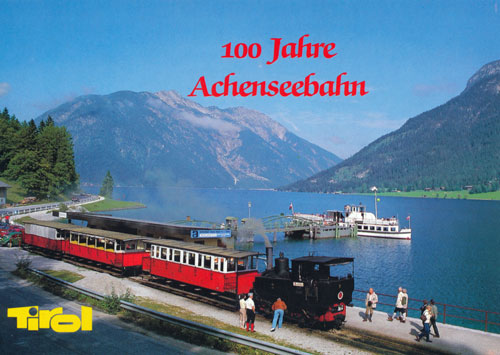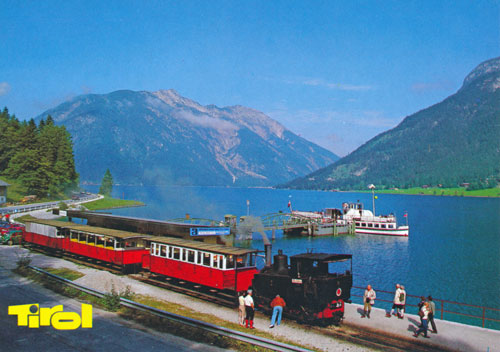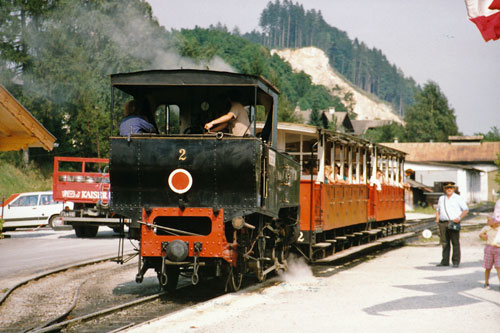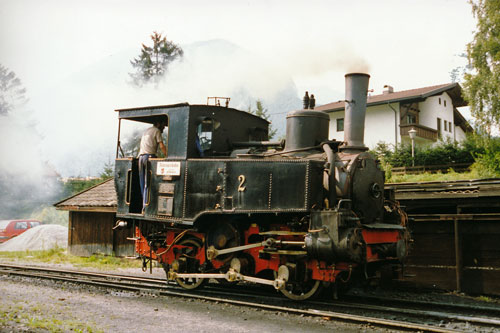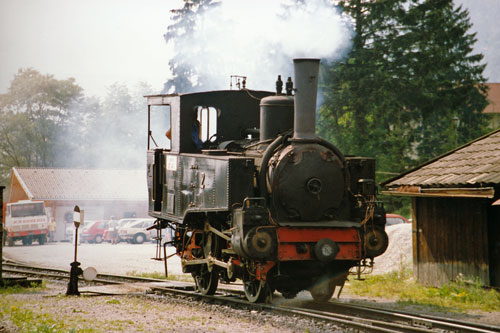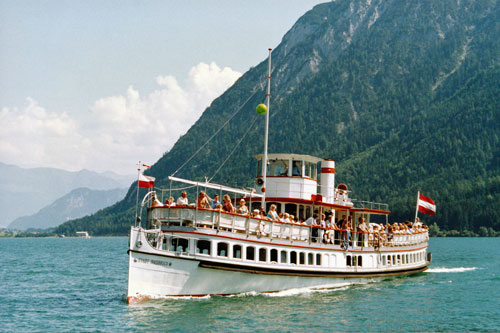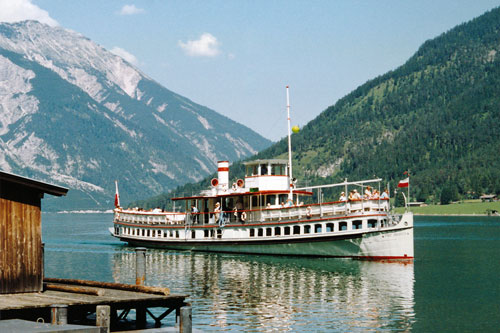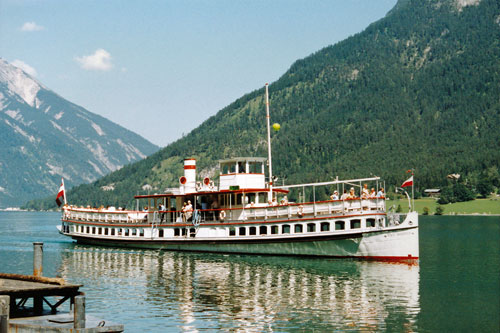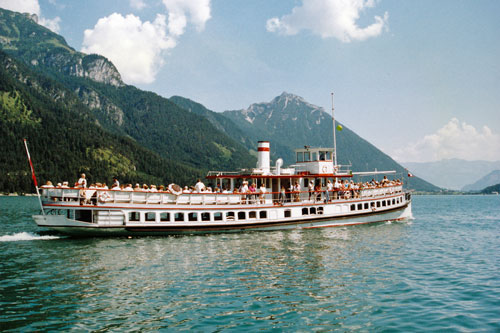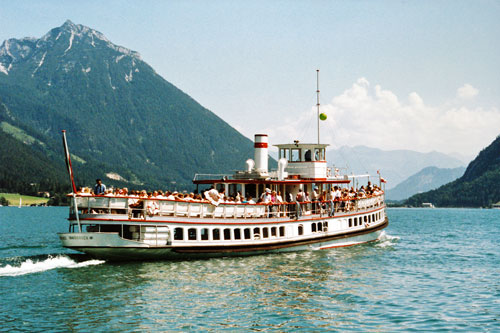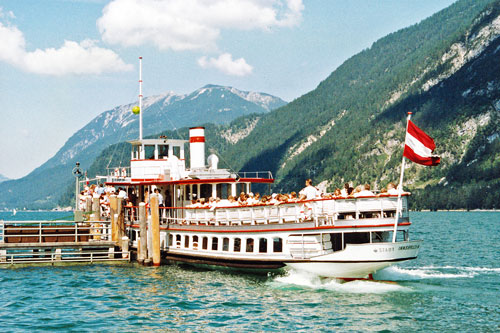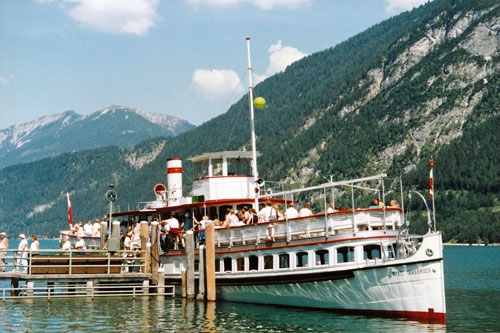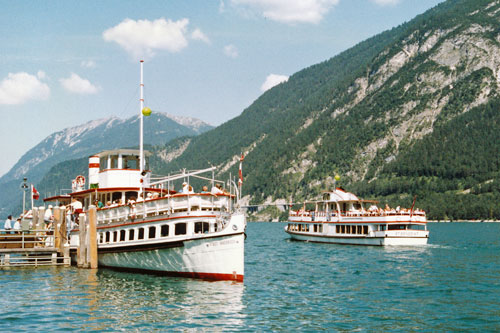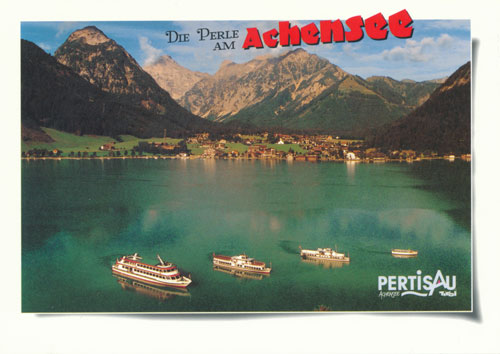Achensee was owned by the St Georgenberg-Fiecht Abbey, who had received it
from the rulers of Schlitters around 1120. The city of Innsbruck bought the
lake from the abbey in 1919. Since 1924 the Achensee has been managed by the
Tiroler Wasserkraft AG (TIWAG), which was founded for this purpose.
Originally, the lake's only outflow was the Achen Bach feeding the Isar.
Since 1927, when the hydro-electric power station in Jenbach was finished, it
primarily feeds the Inn, at a level difference of 380m below the lake. Eight
pelton wheels running at 500 rpm produce a total of 96 MW.
When the Unterinntalbahn railway was finished through Jenbach in 1859,
tourism started to flourish. In order to make the abbey profit, the first
steamboat
St Josef was
acquired in 1887. Furthermore the construction of the 7 km long Achenseebahn
narrow gauge rack railway was initiated, which went into service in 1889
between Jenbach and Seespitz. The same year, on July 21 a second steamboat,
the
St Benedikt (1) went
into service. In 1890 the two boats with a capacity of 320 seats transported
about 30,000 persons.
In 1911 a third scheduled boat, the
Stella Maris went into
service. It was an early passenger boat to be with a diesel engine at its
construction. The boat was designed for 400 passengers. Its MAN diesel
engine was similar to those later used in World War I submarines. However,
the
Stella Maris was
difficult to manoeuvre. When the lake was bought by the city of Innsbruck in
1919, the boat was renamed into
Stadt Innsbruck. In 1925 a motorboat named
Tirol (1)
was acquired, and in 1927 for the first time more than 100,000 persons were
transported.
In 1959 the
St Benedikt (1)
was replaced with a modern diesel vessel named
St Benedikt (2). In 1971 the
Tirol (1) was replaced with a larger
Tirol (2) for 40
passengers. In 1994 the much larger
Tirol (3) went into service, replacing the
Stadt Innsbruck, and
in August 2007 the
Stadt Innsbruck (2) replaced the
St Benedikt (2).
